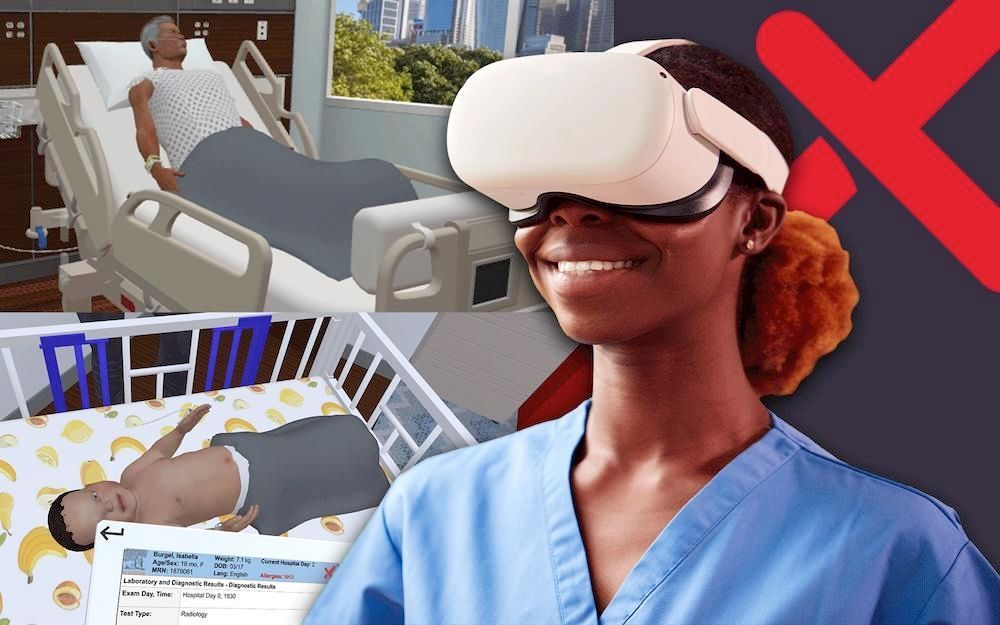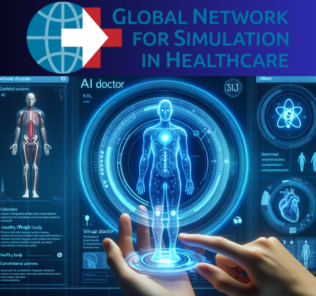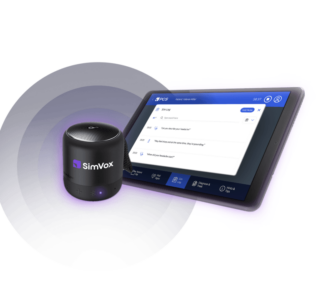7 Ways SimX VR Revolutionizes Competency-Based Learning for Nursing Education
In the ever-evolving landscape of healthcare, the role of technology in education and training is becoming increasingly critical. Virtual Reality (VR), particularly through platforms like SimX, is at the forefront of this transformation. For nursing professionals, VR is not just a futuristic concept but a practical tool for reshaping their competency-based education. This HealthySimulation.com article explores seven significant ways SimX VR is revolutionizing nursing education.
1. Immersive Learning Environments: Realistic Simulations: SimX’s VR technology offers nurses immersive, realistic healthcare scenarios that mirror real-life challenges. These simulations range from routine clinical procedures to complex emergency situations, providing a safe space for nurses to practice and hone their skills. Unlike traditional methods, VR simulations can replicate the stress and unpredictability of real-world medical scenarios, preparing nurses for the intensity and complexity of actual patient care.
Enhanced Engagement: By immersing learners in lifelike environments, VR ensures a higher level of engagement compared to traditional learning methods. Nurses are not just passive recipients of information; they are active participants, navigating and responding to dynamic scenarios. This engagement not only improves skill acquisition but also aids in retaining information longer.
Sponsored Content:
2. Customizable Learning Experiences: Tailored Scenarios: One of the most significant advantages of SimX VR is the ability to customize scenarios to meet specific learning objectives. Educators can modify environments, patient profiles, and clinical challenges to align with the curriculum and address individual learning needs. This personalization ensures that each nurse gains relevant and practical experience, directly translating to improved patient care.
Adaptive Difficulty Levels: SimX VR can adapt to the proficiency level of each nurse, offering beginner to advanced scenarios. This flexibility allows for a more inclusive learning experience, accommodating both novices and experienced professionals. By scaling the complexity of simulations, nurses can continuously challenge themselves, fostering a culture of lifelong learning.
3. Safe and Controlled Learning: Risk-Free Practice: One of the most significant benefits of VR in nursing education is the ability to practice without risk to real patients. This aspect is crucial in building confidence, especially for novice nurses. They can repeat procedures as often as needed to master them without the fear of making irreversible mistakes on actual patients.
Instant Feedback: VR technology provides immediate feedback during simulations, a critical component for effective learning. This feedback can range from automated responses to detailed analyses by instructors, allowing nurses to understand and correct their mistakes in real-time. Such instant feedback accelerates the learning curve, ensuring more efficient skill acquisition.
Sponsored Content:

4. Collaboration and Team-Based Learning: Interprofessional Education: SimX VR facilitates team-based scenarios, enabling nurses to collaborate with virtual colleagues or other learners in real-time. This aspect of VR is essential in fostering interprofessional education, where nurses learn to work effectively with other healthcare professionals. Such collaborative experiences are crucial in developing teamwork and communication skills, which are vital in real-world healthcare settings.
Remote Collaboration: The VR platform allows for remote collaboration, making it possible for nursing students and professionals to train together from different locations. This feature breaks geographical barriers, enabling a more diverse and inclusive learning experience. It also allows for the integration of experts and instructors from various specialties and locations, enriching the learning process.
View the LEARN CE/CME Platform Webinar Is VR the Future of Nurse Education and Training? A Panel Review to learn more!
5. Continuous Learning and Assessment: Ongoing Professional Development: SimX VR supports lifelong learning by offering a wide range of continuously updated scenarios. These scenarios reflect the latest practices and technological advancements in healthcare, ensuring that nurses stay current with industry standards and developments.
Data-Driven Assessments: VR technology provides robust data analytics, tracking the performance of learners across various simulations. This data enables educators and learners to assess progress, identify areas for improvement, and tailor future training accordingly. By leveraging these insights, nurses can focus on specific competencies, ensuring a more targeted and effective educational journey.
6. Standardized Patient Encounters: Clinical placements are often unpredictable, and students may not always have the opportunity to experience crucial patient encounters first-hand. SimX VR addresses this gap by providing standardized patient encounters, ensuring all nursing students gain consistent exposure to a wide range of clinical scenarios. This standardization is vital for a comprehensive nursing education, offering equal learning opportunities regardless of external clinical placement limitations.
7. Mastering HALO Events: High Acuity, Low Occurrence Simulations: SimX VR excels in simulating a broad spectrum of specific clinical situations that nurses may encounter, including High Acuity, Low Occurrence (HALO) events. This capability is invaluable, as it prepares nursing students for rare but critical situations they might face in their practice. By experiencing these scenarios in a virtual setting, students enhance their decision-making skills, clinical judgment, and overall competence, readying them for even the most challenging healthcare environments.
The integration of SimX VR into nursing education marks a significant leap forward in how nurses are trained and prepared for the complexities of healthcare. By offering immersive, customizable, and safe learning environments, enhancing collaboration, and supporting continuous learning and assessment, VR technology is not just enhancing nursing education but is reshaping it for the future. As healthcare continues to evolve, the role of innovative technologies like VR in maintaining the highest standards of nursing competency will undoubtedly grow, ultimately leading to improved patient care and outcomes.
More About SimX
SimX, previously called SimXAR, is a healthcare software company specializing in medical simulation, virtual reality, augmented reality, and medical training and education. The company brings virtual and augmented reality into the realm of healthcare simulation and training.
The company was founded by physicians in training at Stanford, the University of California at San Francisco, and the University of California at Los Angeles. They understood that simulation practice and training are extremely beneficial to both learners and clinicians, and hoped to use virtual reality to make simulation cheaper and more accessible, to reduce medical error and ultimately increase patient safety.
Seeking to push simulation forward, SimX developed a software system that was the first comprehensive professional-grade VR medical simulation system product available on the market. Founded in 2013 and headquartered in Mountain View, California, the platform allows medical teams to replace expensive manikins with incredibly flexible simulated patients backed by a robust case creation engine.
Learn More About SimX VR Medical Simulations!
Sponsored Content:

















